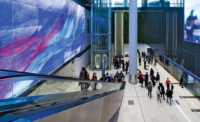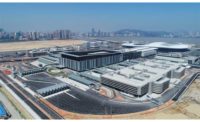Construction of a third runway at one of the world's busiest airports will include careful reclamation of some 650 hectares of contaminated land, using techniques such as Deep Cement Mixing (DCM) and wick drains. Hong Kong’s Chek Lap Kok International Airport needs the third runway to handle an expected 97 million passengers by 2030, as compared to about 63 million last year, according to its master plan.
Japan’s Penta Ocean Construction recently completed tests on a 30 x 30-meter area of contaminated mud pits (CMPs) about 900 m to the north of the airport, which is located on Lantau Island. Last month, Atkins began detailed design for the third runway system.
About 40% of the site is located on an area of CMPs, used by the government since 1992 for the disposal of waste from various reclamation projects. The Airport Authority of Hong Kong will adopt DCM for the first time, to increase the stiffness of the contaminated seabed, while leaving the material in situ to avoid the release of potentially harmful leachate.
The project team first collected water samples and carried out a geophysical survey of the area to obtain a profile of the seabed. The data provided researchers with benchmarking baselines. A geotextile was then laid on top of the test area, which was subsequently covered by a sand blanket some 2 m thick. This also served as a filter to clean any mud left on the rotary blades of the DCM rigs.
The team formed five clusters, each consisting of two 1-m-dia, 22-m-long cement columns. After the design depth was reached, cement slurry was injected into the soft marine mud, at 240-390 liters per m. Cores taken at 28 days confirmed the suitability of the process. No seabed contaminated was reported, according to Penta officials.
Damian Creally, Atkins’ project director, says the successful trial paved the way for its design contract; numerous other design packages will be awarded into 2016. “Atkins’ scope of works includes the design of the ground-improvement works, reclamation, seawalls, re-provisioning works and the extension and modification of existing large-box culverts,” he says. “The detailed design will be delivered within a tight schedule to facilitate the anticipated award of the main works contract in 2016.”
Concerns about possible seabed contamination have been an overarching issue in determining the future of the airport expansion. Professor Alan Lau Kin-tak, associate dean of the Faculty of Engineering at Hong Kong’s Polytechnic University, says conventional reclamation processes would have raised the risk of contamination. “Conventional processes using deep drilling [would] release heavy metals trapped on the seabed. [Sea life would] also be contaminated in the course of mud-drilling and disposal. This would in turn harm public health when people take in contaminated seafood in the food chain. Deep cement mixing will avoid this,” he says.
A more common non-dredge method, involving placing a layer of fill over the marine mud and using vertical wick drains to remove the retained pore water within the marine mud, may be adopted for reclamation of areas outside the CMPs.




Post a comment to this article
Report Abusive Comment